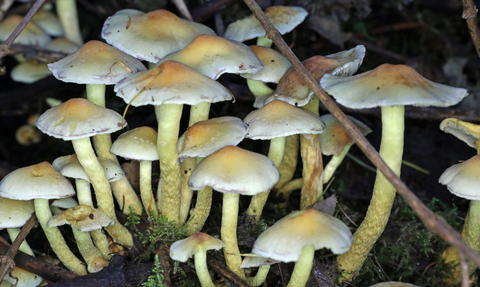
Graham Makepeace-Warne
State of Nature 2024 - Fungi
By 2023 1,466 species of Manx fungi had been recorded, more than 9% of the 16,000 species currently listed in the UK (of which a high proportion are micro-fungi). Many fungi perform an essential role in the decomposition of organic matter and have fundamental roles in nutrient cycling and exchange in the environment. Others have symbiotic relationships with plants, including trees. A few are parasitic on plants and animals.
315 fungus species have been added to our Island list in the last 14 years, following the inception of the Isle of Man Fungus Group in 2012.
Most fungi grow in terrestrial habitats within soil or decaying wood and are principal decomposers in ecological systems or live symbiotically with plants, extending their root systems and sharing minerals and carbohydrates. They are most commonly found in grassland and woodland habitats and, although active year-round, many are only visible during the autumn months when their fruiting/sporing bodies (puffballs, caps, cups, brackets, clubs etc) make them visible.
The Checklist of Fungi of the Isle of Man, (available from the MWT shop) published in 2023 by Isle of Man Fungus Group lists the 452 Ascomycetes (spore shooters) and 1,001 Basidiomycetes (spore droppers) which have been recorded here since the first Manx fungus record in 1909.
24% of species on the IOM Fungus group checklist (363 species) have not been recorded since 1980 or earlier, and each year one or two of these species are re-found.
Of our grassland fungi 2 species have been listed as Endangered in the Global Fungal Red List, 27 as Vulnerable and 1 as Near Threatened.
